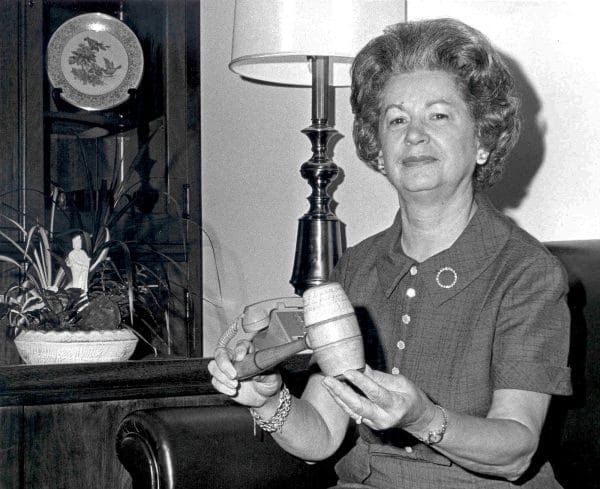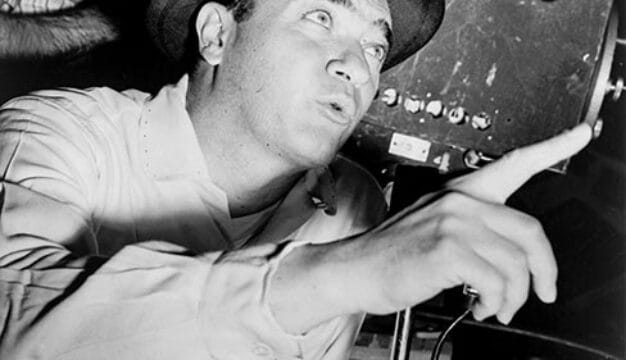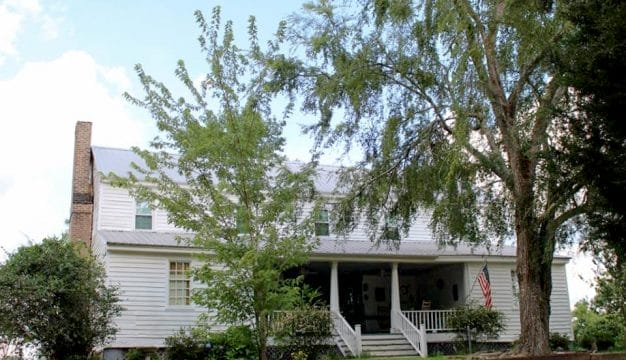Elizabeth Andrews
 Elizabeth Andrews
Elizabeth Bullock Andrews (1911-2002) was the first woman from Alabama elected to the U.S. Congress, representing Alabama’s Third Congressional District from April 4, 1972, to January 3, 1973. She gained the position after winning a special election to replace her husband, Democratic congressman George W. Andrews, who had died in office. Elizabeth from the start expressed no interest in seeking reelection and did not run again. After her time in Congress, Andrews retired to Union Springs, Bullock County, but continued some involvement in civic affairs and Alabama politics.
Elizabeth Andrews
Elizabeth Bullock Andrews (1911-2002) was the first woman from Alabama elected to the U.S. Congress, representing Alabama’s Third Congressional District from April 4, 1972, to January 3, 1973. She gained the position after winning a special election to replace her husband, Democratic congressman George W. Andrews, who had died in office. Elizabeth from the start expressed no interest in seeking reelection and did not run again. After her time in Congress, Andrews retired to Union Springs, Bullock County, but continued some involvement in civic affairs and Alabama politics.
Leslie Elizabeth Bullock was born on February 12, 1911, in Geneva, Geneva County, to Charles Gillespie Bullock and Janie Aycock. Andrews spent her youth in Geneva County and in 1932 graduated from Alabama College (present-day University of Montevallo) in Montevallo, Shelby County, majoring in home economics. She later taught home economics at a high school in Livingston, Sumter County, and then took a teaching job in Union Springs prompted by the better pay there during the Great Depression. There, she met George William Andrews, and the couple married in 1936. They would have two children. During this time, George served as district attorney in the Alabama circuit courts until 1943, when he became an officer in the U.S. Naval Reserve and was stationed at Pearl Harbor, Hawaii. When Alabama congressman Henry B. Steagall died in November 1943, Andrews announced his candidacy for the vacant seat but remained in Hawaii. Elizabeth took a lead role in managing George’s campaign, hosting events and making speeches on his behalf. Despite playing only a small role in the campaign, George secured the Democratic nomination and then the congressional seat in March 1944, largely thanks to Elizabeth’s efforts. George served in Congress 14 consecutive terms, from 1944 to 1971. In December 1971, Andrews underwent heart surgery and then a second surgery for an infection. Complications from the second surgery resulted in his death on December 25, 1971, in Birmingham.
Elizabeth was reported to have had no ambitions to succeed her husband in Congress until friends encouraged her to do so. In particular, Lera Thomas of Texas, who had won a special election to fill her husband’s seat, proved very convincing. Thomas suggested to Elizabeth that the constituents would support her and that she knew her husband’s plans for his term better than anyone else. On January 1, 1972, Elizabeth announced her candidacy. After the 1970 Census, Alabama’s congressional districts were redrawn. The state lost its Eighth Congressional District, and Andrews’ Third District was set to be reapportioned. She faced little challenge as some speculative candidates were dissuaded by the redistricting and only a few progressive Democrats considered opposing her candidacy because of her name recognition and powerful supporters. These progressives backed Lucius Amerson of Macon County, the first African American in Alabama elected sheriff since Reconstruction. His local backers hoped he would be a viable longer-term candidate and enable Democrats to control the district, given Andrews’ interest in only finishing out her husband’s term. The state’s popular governor, George C. Wallace, supported Andrews and even said he would endorse her as an independent if Democrats did not embrace her. This action ensured that most of the members of the Alabama Democratic Executive Committee who had expressed support for Amerson switched sides, voting 72 to 17 in favor of Andrews.
Once the nomination was secured, Andrews faced no Republican challenger and easily won the election. Her campaign proved so inexpensive that she was able to return most of the donations from her race. Andrews then earned the distinction of being the first woman from Alabama elected to Congress. Although two Alabama women had been nominated to serve brief terms in the Senate, and George Wallace’s wife Lurleen briefly served as governor before her death, no woman had yet held a seat in the U.S. House of Representatives. Andrews notably downplayed her gender as an issue in the race and stated that Alabama would support any qualified and capable woman seeking public office. Once in office, Andrews succeeded her husband on the Committee on Post Office and Civil Service, even occupying his old office space. While serving, she introduced a series of amendments to protect medical and Social Security benefits. One amendment, regarding Social Security, notably increased recipients’ earned income limits, and another abolished planned cuts to welfare meant to balance increases in Social Security payments. In honor of her husband, Andrews also worked to secure funding for cancer and heart disease research for medical research centers in Birmingham. Additionally, working alongside Rep. William Nichols of Alabama’s Fourth Congressional District, Andrews sponsored the bill that established the Tuskegee Institute National Historic Site at Tuskegee University in Tuskegee, Macon County.
Andrews only made one speech on the floor of Congress during her nine months in office. It was prompted by the May 12, 1972, assassination attempt on George Wallace that left him paralyzed from the waist down and wheelchair-bound for the rest of his life. Andrews honored the governor and denounced people who protested the controversial governor’s campaign. When her term expired, Andrews declined to run again, stating that the district needed a younger representative. Her colleagues in Congress praised her short but active time of service. After completing her term, Andrews retired to Union Springs and continued to participate in civic affairs there. She died on December 2, 2002, in Birmingham, Jefferson County, and was buried alongside her husband at Oak Hill Cemetery in Union Springs.
Further Reading
- Chamberlin, Hope. A Minority of Members: Women in the U.S. Congress. New York: Praeger Publishers, 1973.
- Wasniewski, Matthew, A. Women in Congress 1917-2006. Washington, D.C.: U.S. Government Printing Office, 2006



